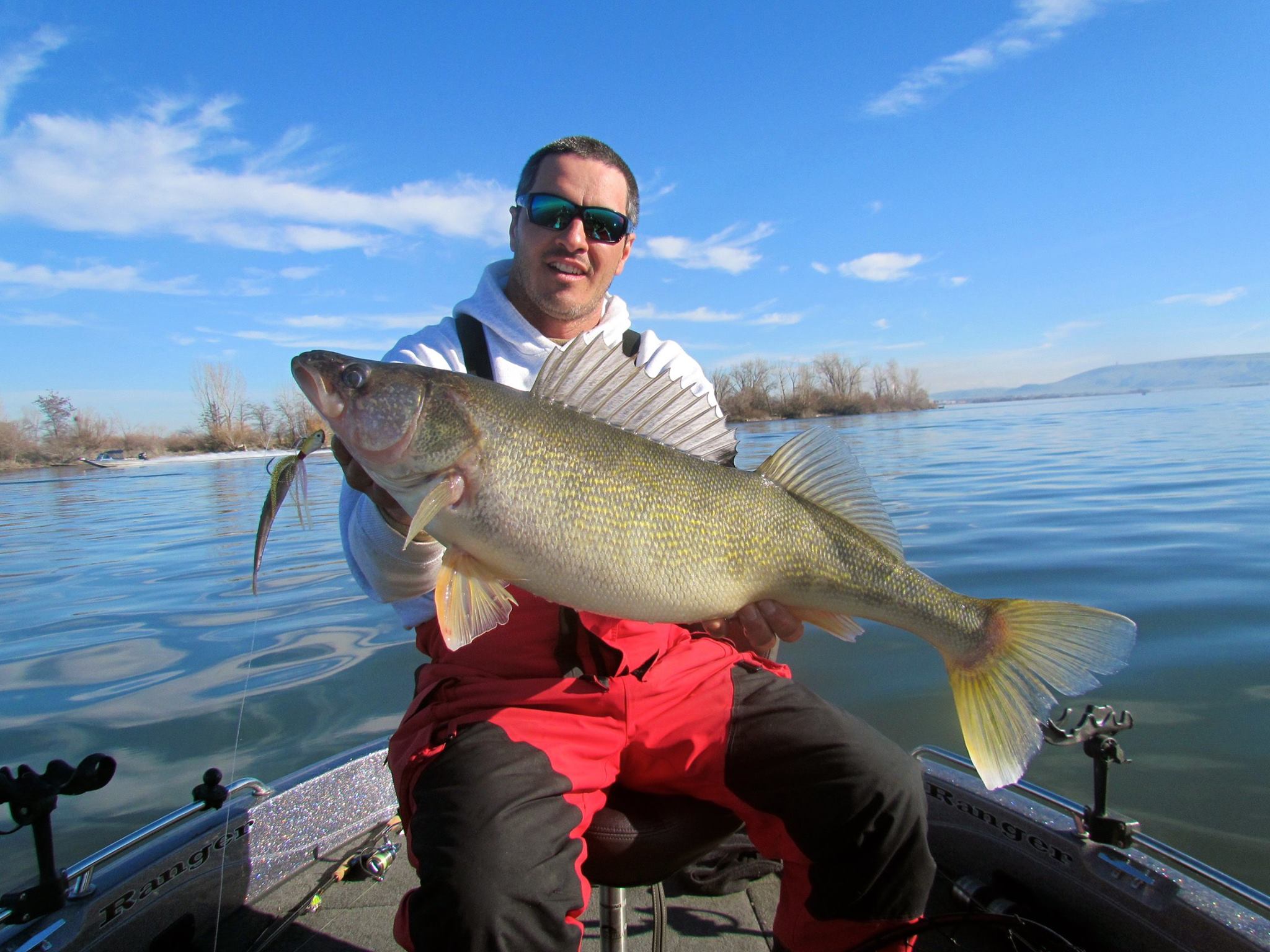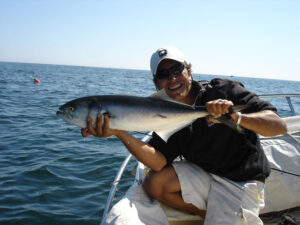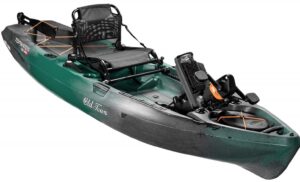Introduction
If you’re a fishing enthusiast looking for an exciting adventure, river fishing for walleye is an excellent choice. Walleye, known for their elusive nature and delicious taste, are highly sought after by anglers around the world. In this comprehensive guide, we will delve into the art of river fishing for walleye, providing valuable insights, tips, and techniques to help you improve your chances of a successful catch. So grab your fishing gear, put on your waders, and let’s dive into the world of walleye fishing!
The Magnificent Walleye
Before we jump into the specifics of river fishing for walleye, let’s take a moment to appreciate the magnificence of this species. The walleye (Sander vitreus) is a freshwater fish native to North America, known for its distinctive marble-like eyes that shine like gold in low light conditions. It is a prized game fish due to its challenging nature and delectable taste.
Walleye inhabit various bodies of water, including lakes, rivers, reservoirs, and even some coastal areas. However, river fishing for walleye offers unique advantages, such as their tendency to congregate near structure and their feeding patterns influenced by river currents.
Understanding Walleye Behavior
Before you embark on your river fishing expedition, it’s essential to understand the behavior and habits of walleye. This understanding will significantly increase your chances of success. Here are some key insights:
- Feeding Patterns: Walleye are primarily nocturnal feeders, preferring low light conditions such as dawn, dusk, and night. They are opportunistic predators and often lurk near structure, waiting for their prey.
- Habitat: Walleye are commonly found near rocky areas, submerged reefs, drop-offs, and deep holes. They seek shelter during the day and venture out to hunt during low light periods.
- Temperature Preferences: Walleye thrive in cooler water temperatures, typically between 55°F and 68°F (12°C – 20°C). They may move to deeper waters during hot summer months.
- Preferred Prey: Walleye have a varied diet but are particularly fond of small fish, such as minnows, shiners, and perch. Understanding their preferred prey will help you choose the right bait.
Gearing Up for River Fishing
Now that we have a good grasp of walleye behavior, let’s explore the essential gear and equipment for a successful river fishing experience:
Rods and Reels
Choosing the right rod and reel combination is crucial for walleye fishing. Opt for a medium to medium-light spinning rod in the 6 to 7-foot range, paired with a high-quality spinning reel. The rod’s sensitivity will allow you to detect subtle strikes, while the reel’s smooth drag system will help you handle the walleye’s strong runs.
Fishing Line
When it comes to fishing line, use a monofilament or fluorocarbon line with a test strength between 6 to 10 pounds. These lines provide the ideal balance between strength and sensitivity, allowing you to detect bites and handle the walleye’s aggressive fighting style.
Tackle and Bait
Walleye can be finicky when it comes to bait selection, so it’s essential to have a variety of options. Some popular choices include:
- Jigs: Jigs are versatile and effective for walleye fishing. Opt for jig heads in the 1/8 to 3/8 ounce range, paired with soft plastic bodies in natural colors.
- Crankbaits: Crankbaits mimic the movement of injured baitfish, making them irresistible to walleye. Choose diving crankbaits that dive to the desired depth based on the river’s characteristics.
- Live Bait: Live bait, such as minnows or nightcrawlers, can be highly effective for walleye fishing. Make sure to check local regulations regarding live bait usage.
Fishing Accessories
Don’t forget to pack some essential fishing accessories, such as a landing net, pliers, line clippers, and a tackle box to keep your gear organized. Additionally, a good pair of polarized sunglasses will help you spot underwater structures and increase your chances of locating walleye hotspots.
Choosing the Right River
When it comes to river fishing for walleye, choosing the right river is crucial. Not all rivers are created equal, and some offer more favorable conditions for walleye fishing. Here are some factors to consider:
- Flow Rate: Walleye prefer rivers with moderate flow rates. Too much current can make it difficult for them to feed, while too little current may result in reduced oxygen levels.
- Depth and Structure: Look for rivers with varying depths and abundant structure, such as submerged rocks, fallen trees, and gravel beds. These areas provide shelter and ambush points for walleye.
- Water Clarity: Clear or slightly stained water is ideal for walleye fishing. Murky water can hinder their feeding behavior and make it harder for them to locate your bait.
- Accessibility: Choose a river that is easily accessible and has public access points. This will make your fishing expedition more convenient and enjoyable.
Effective Techniques for River Fishing
Now that you’re equipped with the right gear and have chosen a suitable river, let’s explore some effective techniques for river fishing for walleye:
Drifting
Drifting is a popular technique for covering a large area and locating active walleye. It involves allowing your bait or lure to drift naturally with the river’s current while keeping a close eye on your line for any signs of a bite. Adjust your drift speed by using a drift sock or adjusting your trolling motor.
Jigging
Jigging is a versatile technique that can be effective in various river conditions. Cast your jig near structure or potential walleye hiding spots and let it sink to the desired depth. Use a slow and steady retrieve with occasional pauses to entice the walleye to strike.
Trolling
Trolling allows you to cover a large area and locate walleye that are actively feeding. Use diving crankbaits or spinner rigs and adjust your trolling speed based on the river’s flow rate. Experiment with different lure colors and sizes until you find what the walleye are responding to.
Night Fishing
Walleye are notorious night feeders, making night fishing a highly productive technique. Use glow-in-the-dark lures or add glow sticks to your bait for increased visibility. Focus on areas with structure and slow-moving currents, as walleye are more likely to be active in these areas during the night.
Tips and Tricks for Success
Here are some additional tips and tricks to maximize your chances of a successful river fishing experience:
- Pay attention to the weather: Walleye tend to be more active during overcast or slightly rainy days. Take advantage of these conditions for optimal fishing.
- Use a fish finder: Investing in a fish finder can significantly increase your chances of locating walleye hotspots and understanding the underwater topography.
- Vary your retrieval speed: Walleye can be finicky, so don’t be afraid to experiment with different retrieval speeds to find what triggers their predatory instincts.
- Be patient: Walleye fishing requires patience and persistence. Keep trying different techniques and locations until you find the winning combination.
Conclusion
River fishing for walleye is an exhilarating and rewarding experience for any angler. By understanding walleye behavior, choosing the right gear, and employing effective techniques, you can significantly increase your chances of a successful catch. Remember to respect local fishing regulations, practice catch-and-release when appropriate, and enjoy the beauty of nature while pursuing this magnificent species. So grab your fishing gear, head out to the river, and embark on an unforgettable walleye fishing adventure!
FAQs
1. What is the best time of year for river fishing for walleye?
The best time of year for river fishing for walleye depends on the region and the specific river. Generally, spring and fall are considered prime seasons as walleye are more active during these transitional periods. However, summer and winter can also offer excellent fishing opportunities in certain rivers.
2. What is the legal size limit for walleye?
The legal size limit for walleye varies depending on the jurisdiction and specific regulations. It’s crucial to familiarize yourself with the local fishing regulations and adhere to the size limits to ensure the sustainability of the walleye population.
3. Are there any specific fishing techniques for targeting trophy-sized walleye?
Targeting trophy-sized walleye requires a combination ofpatience, skill, and knowledge. Some specific techniques that can increase your chances of landing a trophy-sized walleye include targeting deeper waters, using larger baits or lures, and focusing on areas with abundant structure and cover. Additionally, fishing during low light conditions or at night can also increase your chances of encountering a trophy walleye.
4. Can I use artificial lures for river fishing for walleye?
Absolutely! Artificial lures can be highly effective for river fishing for walleye. Crankbaits, jigs, and soft plastics are all popular choices among anglers. Experiment with different colors, sizes, and retrieval techniques to find what works best in your specific fishing location and conditions.
5. Are there any safety precautions I should take when river fishing for walleye?
When river fishing for walleye, it’s essential to prioritize safety. Here are some key safety precautions to consider:
- Wear a life jacket or personal flotation device, especially if you’re fishing from a boat or wading in deeper waters.
- Be aware of your surroundings and watch out for potential hazards such as fast-moving currents, submerged rocks, or fallen trees.
- Let someone know about your fishing plans, including your expected return time and location.
- Stay hydrated and protect yourself from the sun by wearing sunscreen, a hat, and appropriate clothing.
Summary
River fishing for walleye is an exciting and challenging endeavor that requires knowledge, skill, and the right equipment. By understanding walleye behavior, choosing the right river, and employing effective fishing techniques, you can increase your chances of a successful catch. Remember to respect local fishing regulations, practice catch-and-release when appropriate, and prioritize safety at all times. So grab your gear, head to the river, and enjoy the thrill of walleye fishing!





